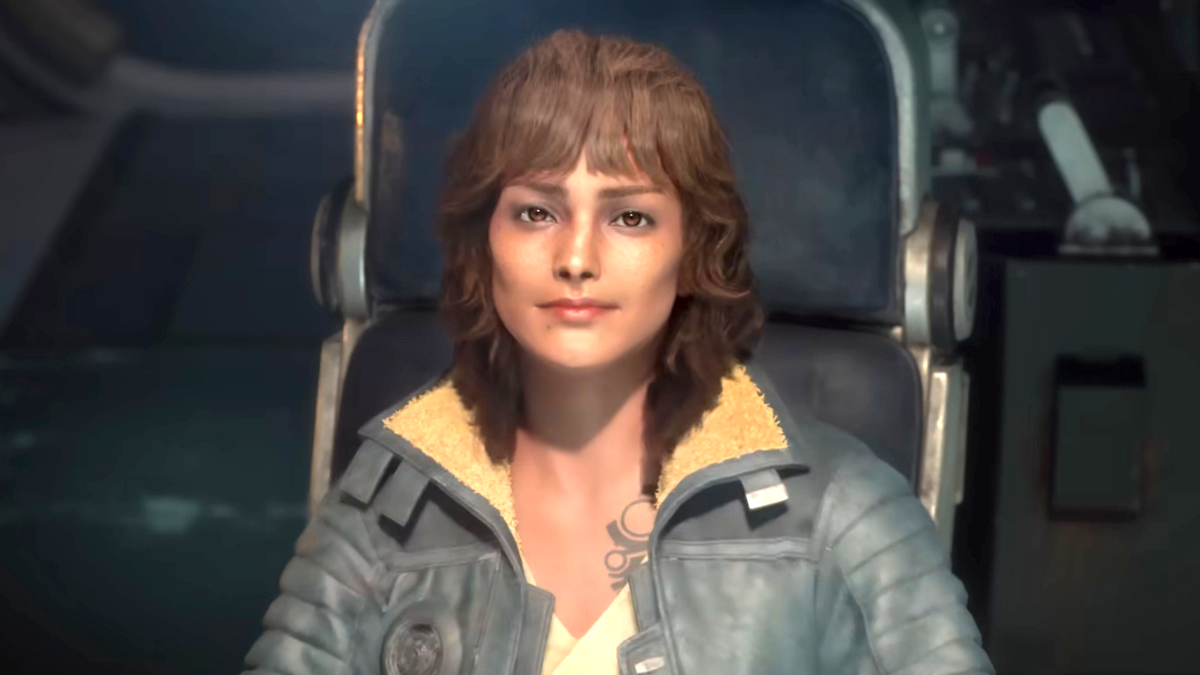
Sony has always sort of stumbled when it comes to the handheld gaming market. Their first foray into the market, the PSP, was met with very mixed reaction. It was expensive, featured an odd and annoying proprietary media system in the UMD, but had impressive graphics for its time and was the first handheld gaming device that really brought multiple forms of media into one small system with the ability to act as an MP3 player or a small movie player. Much more recently, the PSP Go was released. The Go did away with UMDs entirely and replaced it with a 16 GB built-in memory to store your games on. The device was also much more compact, but also much more expensive. Even more recently was the Xperia Play, Sony‘s attempt at combining the PlayStation side of gaming with the Xperia side of communication. A lack of real support in terms of games and awkward hardware configuration made the phone dead on arrival.
All three devices suffered from a massive hole in the one department where the name “PlayStation” matters most: the games. While the PSP got several great games later in the lifespan, it was too little too late for Sony‘s first shot at giving Nintendo, the house of the Game Boy and Nintendo DS, a run for its money.
Fast-forward to a little more than a year ago, January 2011. The Next Generation Portable, or NGP, is revealed to the world. This small device was billed as being as powerful as a PS3, have all the same functions as that iPhone in your pocket, have more support from game studios than any other handheld device in history. It was almost too good to be true.
Almost.
A year later and the miracle now known as the PlayStation Vita has arrived worldwide, and there’s no doubt it’s an impressive little machine. But has Sony made good on all the things they said it would do?
First, the basics, and reminders for those who haven’t been paying attention. The Vita has two different configurations, a Wi-fi model and a Wi-fi/3G model, which run $249.99 and $299.99, respectively. The 3G service is through AT&T, which isn’t favorable to most gamers, but it’s all we’ve got.
Here’s a quick rundown of the Vita’s specs:
| CPU | 4-core ARM Cortex-A9 MPCore |
|---|---|
| Storage capacity | PS Vita memory card (4, 8, 16 or 32 GB) |
| Memory | 512 MB RAM, 128 MB VRAM |
| Display | 5-inch OLED multi-touch capacitive touchscreen, 32-bit color, 960 × 544 qHD @ 220 ppi |
| Graphics | 4-core SGX543MP4+ |
| Input |
|
| Camera | Front and back 1.3MP cameras |
| Connectivity | IEEE 802.11 b/g/n Wi-Fi, 3G, Bluetooth 2.1+EDR |
| Online services | PlayStation Network |
| Dimensions | 83.55 mm (3.289 in) (h) 182 mm (7.2 in) (w) 18.6 mm (0.73 in) (d) |
| Weight | Wi-Fi: 260 grams (9.2 oz) 3G: 279 grams (9.8 oz) |
It’s an impressive machine, to say the least. There are very few handheld electronic devices that have quad-core capabilities, let alone ones focused on gaming. There are a handful of tablets out there, but let’s be honest, there’s not a thing on a tablet you’d need a quad-core for yet.
The first thing many people notice when they pick up the device is how deceptively light it is. The Vita is a fairly large device, big enough to challenge even the deepest of pockets, but feels much more evenly weighted and balanced than something like the 3DS. It’s impressive that such a light weight has been accomplished while still maintaining such a sturdy feel. Unlike the 3DS, which to this day still creaks a bit here and there (which scares the daylights out of me by the way,) the Vita has no moving parts aside from the dual control sticks, and no creaking or “squishyness.” It feels very solid, and precisely how a handheld gaming system should feel.
The most eye-popping feature, physically, is the massive 5″ OLED touchscreen on the front. The screen smoothly blends in with the rest of the front of the system. It feels very sturdy too. It’s odd that the screen isn’t made with Gorilla Glass, but it’s something easy to look past. Because of the nature of the touchscreen, it’s likely you’ll get smudges galore unless you slap a fingerprint-resistant screen protector on there. I’m personally afraid to because I don’t want that chance of diminishing the gorgeous picture.
The Vita is the first handheld device to feature the same dual thumbsticks that’s become required for gaming today. The sticks feel much different than the analog nub on the PSP or the circle pad on the 3DS. They’re full on analog sticks, but shrunk down as to not protrude from the system too much, and they don’t have a full range of motion as such on a Dualshock controller. Still, it’s a very welcome addition.
The buttons, your normal PlayStation face buttons, the triggers and the D-pad, all have a slight click to them. It’s a great feel. Not too mushy, not too stiff, but somewhere perfect in between. It’s extra awesome that Sony managed to find a way around Nintendo‘s patent on plus-shaped D-pads.
But when it comes right down to it, physical impressions only last so long, right? The bulk of a gaming console, handheld or not, is how the system software works.
When you first boot up the Vita, you’ll be prompted to go through the normal first time setup. Setting the date, language, tying your PSN ID to it, etc. After that, you’re encouraged to go to the Welcome Park app right there on the front page.
The Vita has done away with the tried and true, award winning XrossMediaBar in favor of the LiveArea system. Not only does this system share the XMB’s strange grudge against putting spaces in the title, but it’s very easy to navigate. If you’ve ever tried your hand at an iDevice or an Android phone, you’ll be right at home here. The menu takes on a series of brightly colored, bubble-shaped icons due to the menu interface being entirely controlled with the touchscreen. I’m actually really sad to see the XMB go, and I’m not a terribly big fan of Sony giving in to another similar looking touch interface. I guess I can understand why they went with it, however. I would have liked an option to change away from the all-touch, no-button menu to a version of the XMB, or something similar.
Welcome Park is a simple program to get you acquainted with all the Vita’s features. There are separate minigames for the Sixaxis motion controls, the camera, the touchscreen and, oddly enough, the sound. Even cooler you can actually earn trophies for these games.

Your main apps are everything you’d expect. Aside from the Welcome Park, you also have the NEAR app, showing off what people around you are up to, your standard camera and picture-viewing app, an internet browser, your trophy viewer, PlayStation Store, settings, content manager (where you’ll listen to music and such and move files around,) your party chat app and whatever games you have either installed or inserted into the game card slot. Once you download the latest update, you also have access to maps. Although the maps are cool, they aren’t entirely worth anything unless you have the 3G version of the device. That allows you to use your Vita as a GPS.
Although I don’t own the 3G version myself, I have messed around with it a bit to get acquainted with what the service does and does not allow me to do. If you wanted to play games online against others over 3G or download things from the PlayStation Store over 3G, you’re out of luck. The 3G is limited to simple stuff like account management, internet browsing, trophy and messaging support, etc. This is done so you don’t go over your data cap so quickly.
Your experience with the 3G service will probably vary from mine. AT&T has a very strong presence in the Chicagoland area. If you’ve ever had their service through cell phones or another data plan, you know what to expect. I think it’s odd that the Vita wasn’t upgraded to 4G, given how we’re in a transition mode between the two, but I imagine it was something to do with trying to keep the already frightening cost down.
The menu does have a handy feature. In the upper right corner of your screen is your notifications bubble. This is where you’ll be able to see progress on downloads or where you’ll be told of a trophy you’ve unlocked or if you’ve received a message.
The only downside of this is the installing system. While the downloading itself can be performed in the background, installing the actual programs will happen whenever you find yourself on LiveArea after that. Everything else during installation is locked completely until it’s finished. This isn’t so much a problem when you’re just messing around on the menu, but it’s infuriating when you’re playing a game and suspend it to use the web browser or something. I’d like to see at least an option to have to manually start the installation like there is on the PS3, something that I’d imagine is very easy to implement into a future firmware update.
By the way, remember how firmware updates on the PS3 or PSP could take up to several hours to complete? You don’t have that here. Upon connecting my Vita to the internet for the first time, I manually updated the firmware (no automatic notification or anything, hopefully that’ll be fixed too,) and the whole process was done in less than three minutes. I think I teared up a little. It was a glorious sight.
What’s a little more confusing is the amount of times I have to apparently sign in to PSN. I’m already tied to the system itself, but of the four games I’ve been messing with over the past few days for review, all of them had a notice at the beginning to sign in again anyway. It didn’t make much sense, and it really bogs down the experience.

These are all very minor gripes compared to the big picture. The fact of the matter is that the PlayStation Vita is a phenomenal handheld device that represents the future the handheld gaming market is going to. All of the features work well, the system is built to last, and the streamlined experience is reminiscent of what you’d find on a PS3.
However, this direction worries me just a bit. What I’m concerned about with the Vita is the amount of ports the system might see that are too close to their console counterparts. Of the games at launch, the only games that are ports are Ultimate Marvel Vs. Capcom 3, Rayman Origins and Ninja Gaiden Sigma Plus. All of these have their own unique Vita controls and features, but in many cases that may not be enough. The reason a pairing such as the Wii and DS, or the GameCube and the Game Boy Advance before it worked so well is because the systems complemented each other with their own unique features and games, while still having connectivity capabilities. My concern is if many of the same games wind up showing up in largely the same state on bot PS Vita and PS3, there won’t be much of a reason to look into the Vita games unless you’re really on the move that much. I’m just hoping for some sort of balance. I want games on the Vita to make me glad I own a Vita, and not just feel like I can take PS3 games with me. Keep in mind that although I’m concerned for the future of the software on the handheld, this did not factor into my total score at all. I’m just being hopelessly philosophical.
When it comes right down to it, I have a hard time saying anything overly negative about the Vita. The complaints I mentioned above are nitpicking at worst, and all of them are easily repairable through the magical phenomenon known as a firmware update. The Vita is powerful, innovative, sexy, sleek, durable and useful. Sony has managed to rid themselves of the curse of putting out a controversially lame handheld system. As I mentioned earlier in this review, I think the features more than justify the intimidatingly high price tag considering the power and amount of features you’ve got here. Perhaps you won’t be able to work a Vita into your lifestyle because you can’t afford it or that one game that would sell you on it isn’t quite there, but the Vita is a device that should be on the must-have list of every gamer, technophile and generally people who enjoy entertainment. You can’t ask for much more.







